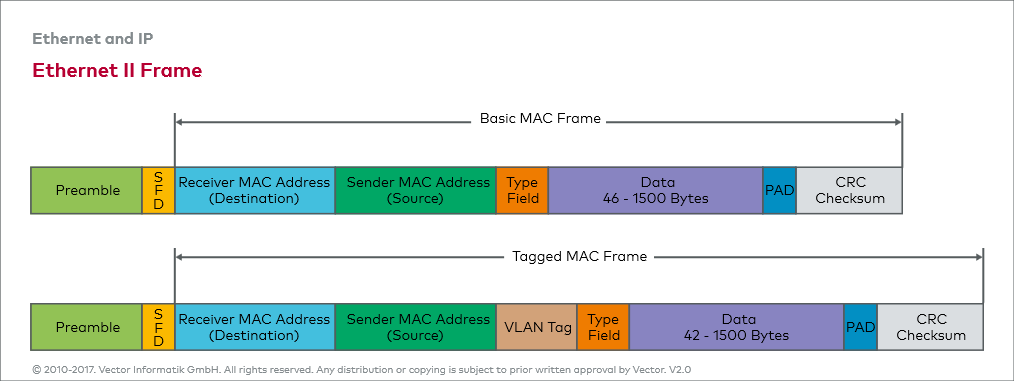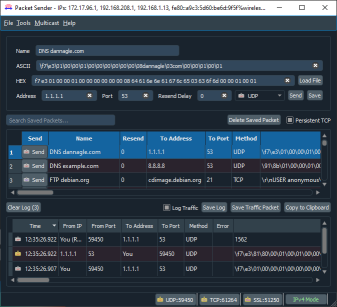

The first file, called "data", contains a list of numbers. Table 5 below provides some examples of packet fragmentation. Additionally, I have included some router solicitation and advertisement routines. I have included an example which sends an ARP request ethernet frame as well as an example that receives an ARP reply ethernet frame.
#RAW ETHERNET PACKET SENDER MAC#
To learn the next-hop's MAC address for use in the Table 2 and 3 examples above, you must use the Address Resolution Protocol (ARP). We provide a "cooked" packet with destination MAC address in struct sockaddr_ll. Sd = socket (PF_PACKET, SOCK_DGRAM, htons (ETH_P_ALL)) This is called a "cooked packet." To do this, we must know the MAC address of the router/host the frames will be routed to next ( more explanation). In the Table 3 examples, we fill out all values, but only including the destination (i.e., next-hop) layer 2 (data link) information (not source MAC address). Send ICMP Echo Request with data and receive reply.

i.e., we specify ethernet frame header with MAC addresses. We provide layer 2 (data link) information. Sd = socket (PF_PACKET, SOCK_RAW, htons (ETH_P_ALL)) To do this, we must know the MAC address of the router/host the frames will be routed to next ( more explanation), as well as the MAC address of the network interface ("network card") we're sending the packet from. In the Table 2 examples, we fill out all values, including the layer 2 (data link) information (source and next-hop MAC addresses). Send HTTP GET (an example with TCP data) ( note). Send SYN packet (an example with no TCP data). The kernel fills out layer 2 (data link) information (MAC addresses) for us. Sd = socket (AF_INET, SOCK_RAW, IPPROTO_RAW) In the Table 1 examples below, we tell the kernal the IP header is included (by us) by using setsockopt() and the IP_HDRINCL flag, and we can modify all values within the packet, but the kernal fills out the layer 2 (data link) information (source and next-hop MAC addresses) for us. The packet parameters that can be modified are determined by which combination you choose. There are other possible combinations you could try. Three combinations of the Domain, Type, and Protocol arguments are shown here. You don't need pcap.Īn implementation of all these routines with a GUI (using GTK+) can be found here. You must run these as root to obtain raw sockets. Rather than use command-line arguments, each example has hard-coded values, so you need to modify each example to suit your preferences. The intention here is to be able to arbitrarily set the various parameters within a packet. I have recently been investigating raw socket programming in C for linux and I decided to provide a collection of routines I have prepared.

However, if I use 0x0800 for protocol, recv.out can receive packets from outside, but still cannot receive the packets I sent.C Language Examples of IPv4 and IPv6 Raw Sockets for Linux But recv.out cannot receive packet !?(upper right of image). I used wireshark to detect packets, and I can receive the packets I sent(in left of image),and I can see send.out exactly sending packets(bottom right of image).
#RAW ETHERNET PACKET SENDER CODE#
I edit it at two parts, one pat is for ethertype(change 0x0800 to a custom-protocol 0x1234)Īnd another part is deleting code for IP header processing (because original code is based on IP, but I need a raw ethernet frame).


 0 kommentar(er)
0 kommentar(er)
